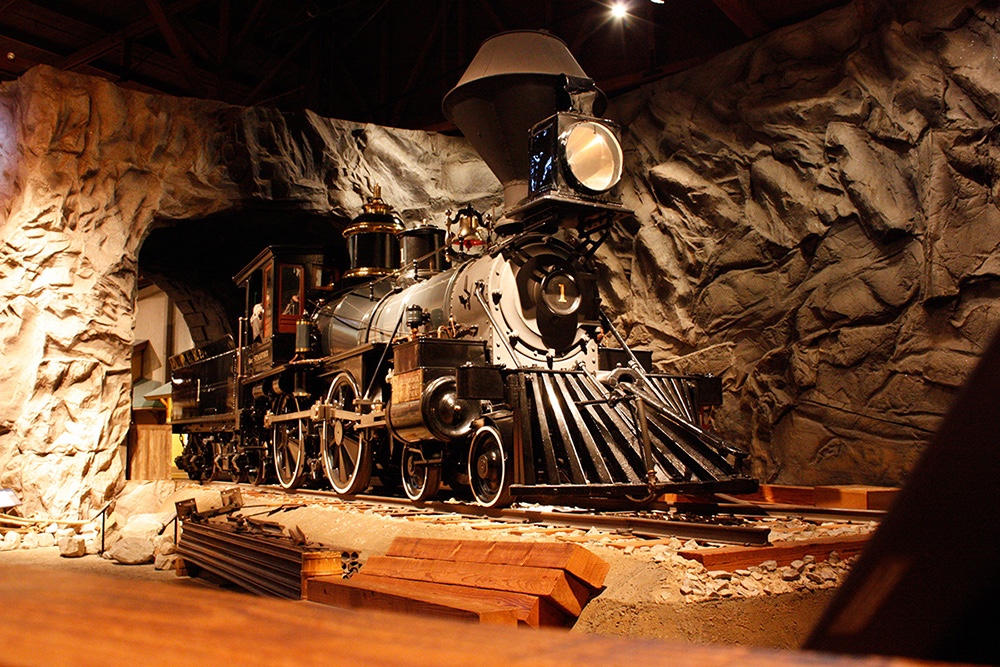Norfolk & Western’s Jawn Henry (named for the legendary “steel-drivin’ man”) was the last of a handful of U.S. experimental steam turbine locomotives, which appeared as a response to the diesel-electric locomotive’s overall superiority to conventional steam power.
Turbines first came into use for steamships and power plants around 1900, and their advantages over reciprocating engines prompted some experimental locomotives with turbines linked to mechanical drive mechanisms in Europe in the 1920’s and ’30’s.
In 1938, in an effort to equal Electro-Motive’s diesels, General Electric built two locomotives with oil-fueled boilers which fed steam to turbines which drove electric generators which fed current to traction motors. These steam-turbine-electrics tested mainly on Union Pacific; they were not successful, and were soon scrapped.
Subsequent steam turbines were coal-fired, and were sponsored by the Pennsylvania, Chesapeake & Ohio, and N&W – roads that derived much of their revenues from coal traffic and sought alternatives to diesels in order to stay in their shippers’ good graces.
In 1944, Baldwin built PRR 6200, a mechanical-drive turbine with a 6-8-6 wheel arrangement. With its big boiler, rear cab, and rod-connected drivers, 6200 resembled a conventional steam locomotive; it was out of service by 1949. PRR also researched a steam-turbine-electric design, the V1 “Triplex,” but this massive machine never got off the drawing board.
Similar to PRR’s V1 were C&O 500-502 and N&W 2300, the Jawn Henry. All were built by Baldwin-Westinghouse, C&Os trio in 1947-48, and Jawn in 1954. They had a coal bunker in front of the cab, then a rear-facing boiler, followed by the turbine and electrical generator toward the rear; all equipment was housed in a huge streamlined carbody. A separate tender carried water.
C&Os turbines were for a new passenger train, the Chessie. The complex locomotives’ insatiable demands for coal and maintenance, and the cancellation of the Chessie, led to their scrapping in 1950.
N&W’s freighter Jawn Henry had an automatically controlled water-tube boiler working at 600 PSI, weighed 409 tons, and was rated at 4500 h.p. (vs. 2400 for the biggest single-unit diesel). It put out 199,000 pounds of tractive effort, and could haul more tonnage on less fuel than conventional steamers, but at lower speeds. Jawn had a few bugs but performed well. It was the high first cost of production units (caused in part by the lack of interest from other roads) that left it an orphan. Jawn Henry was cut up in 1957.













